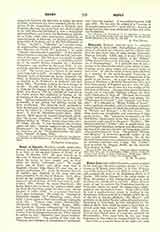

Henry of Segusio, BLESSED, usually called HOSTIENSIS, an Italian canonist of the thirteenth century, b. at Susa (in the ancient Diocese of Turin); d. at Lyons, October 25, 1271. He gave himself up to the study of Roman law and canon law at Bologna, where he seems to have taught, and to have taken his degree “utriusque juris”. He taught canon law at Paris, and spent some time in England, whence King Henry III sent him on a mission to Innocent IV. Later he became Provost of Antibes, and chaplain to the pope and was soon promoted to the See of Sisteron (1244), afterwards to the Archdiocese of Embrun (1250). He became Cardinal–Bishop of Ostia and Velletri, December 4, 1261, whence his name Hostiensis. His health forced him to leave the conclave which, after the Holy See had been vacant for three years, elected Gregory X (1271-1276). As a canonist Hostiensis had a great reputation. His works are: “Lectura in Decretales Gregorii IX” (Strasburg, 1512; Paris, 1512), a work begun at Paris but continued during his whole life; “Summa super titulis Decretalium” (Strasburg, 1512; Cologne, 1612; Venice, 1605), also known as “Summa archiepiscopi” or “Summa aurea”, written while he was Archbishop of Embrun, a useful work on Roman and canon law, which won for its author the title “Monarcha juris, lumen lucidissimum Decretorum”. One portion of this work, the “Summa, sive tractatus de poenitentia et remissionibus” was very popular. It was written between 1250 and 1261. He was also the author of a “Lectura in Decretales Innocentii IV”, never edited. A work on feudal law has also been attributed to him, but without foundation.
A. VAN HOVE

